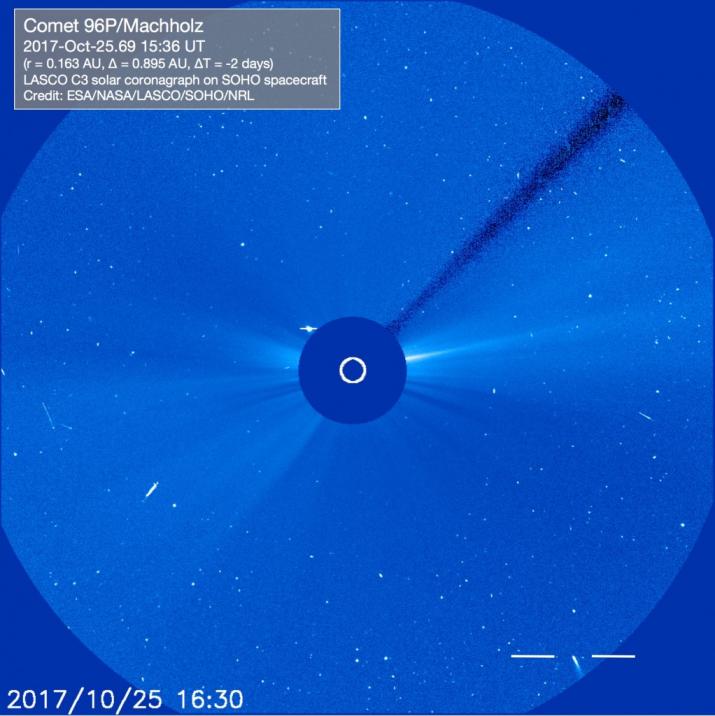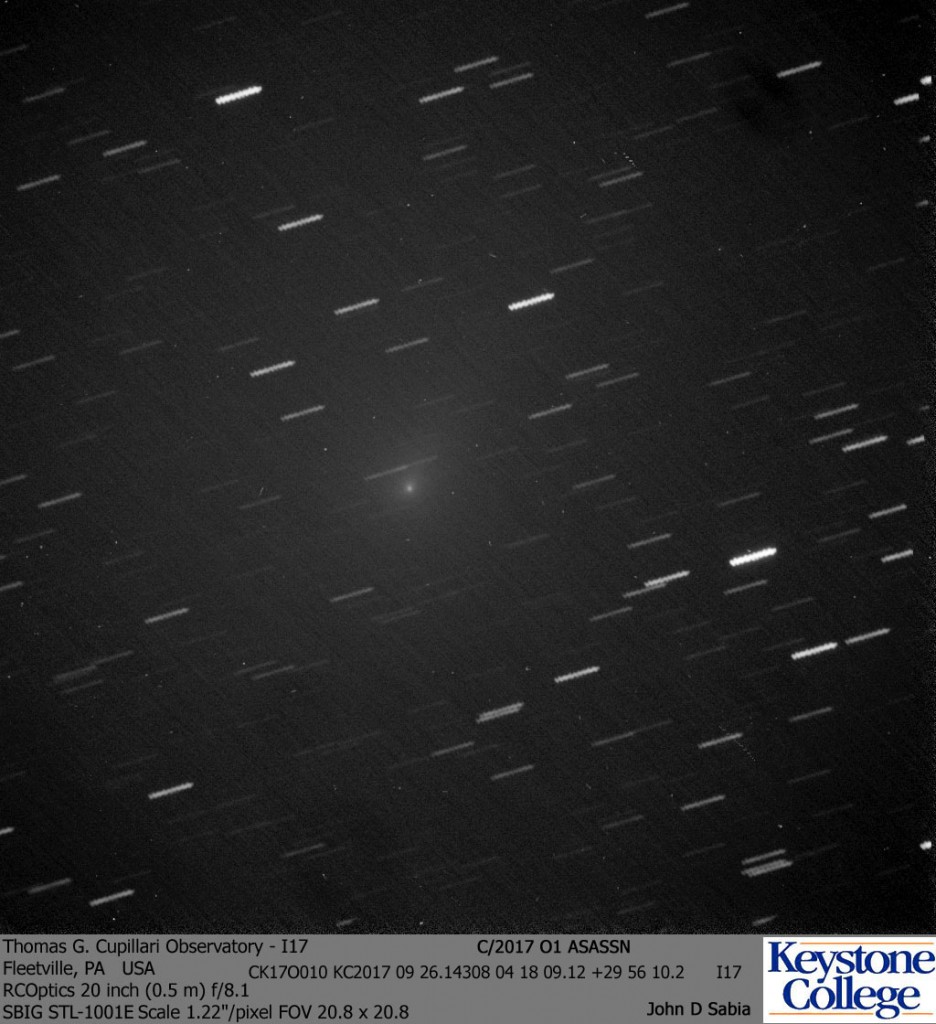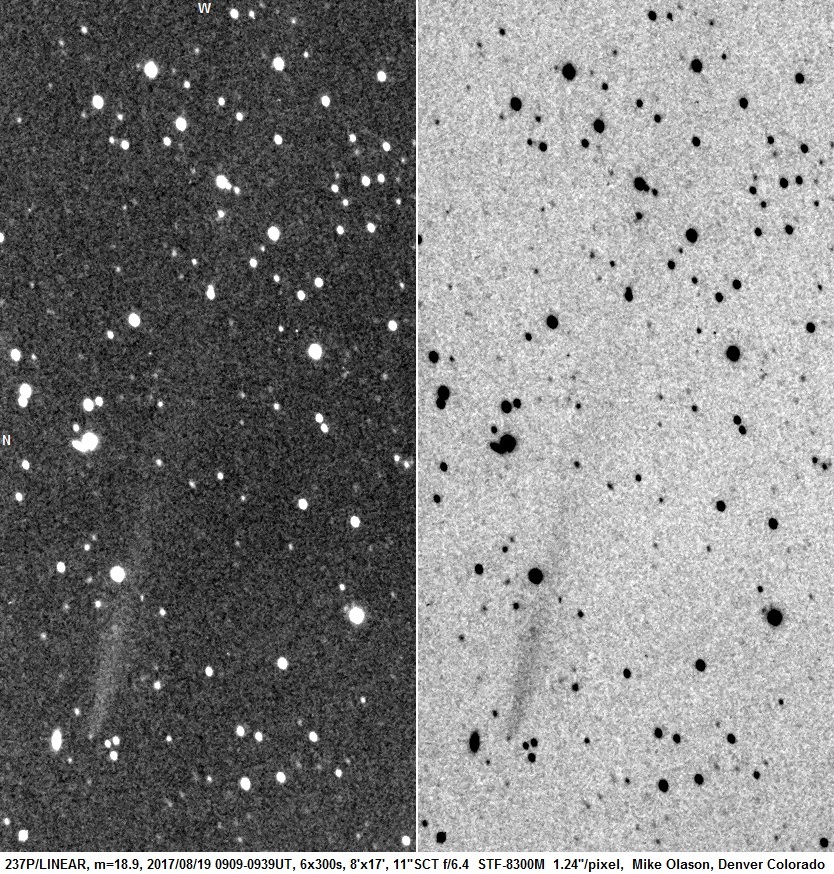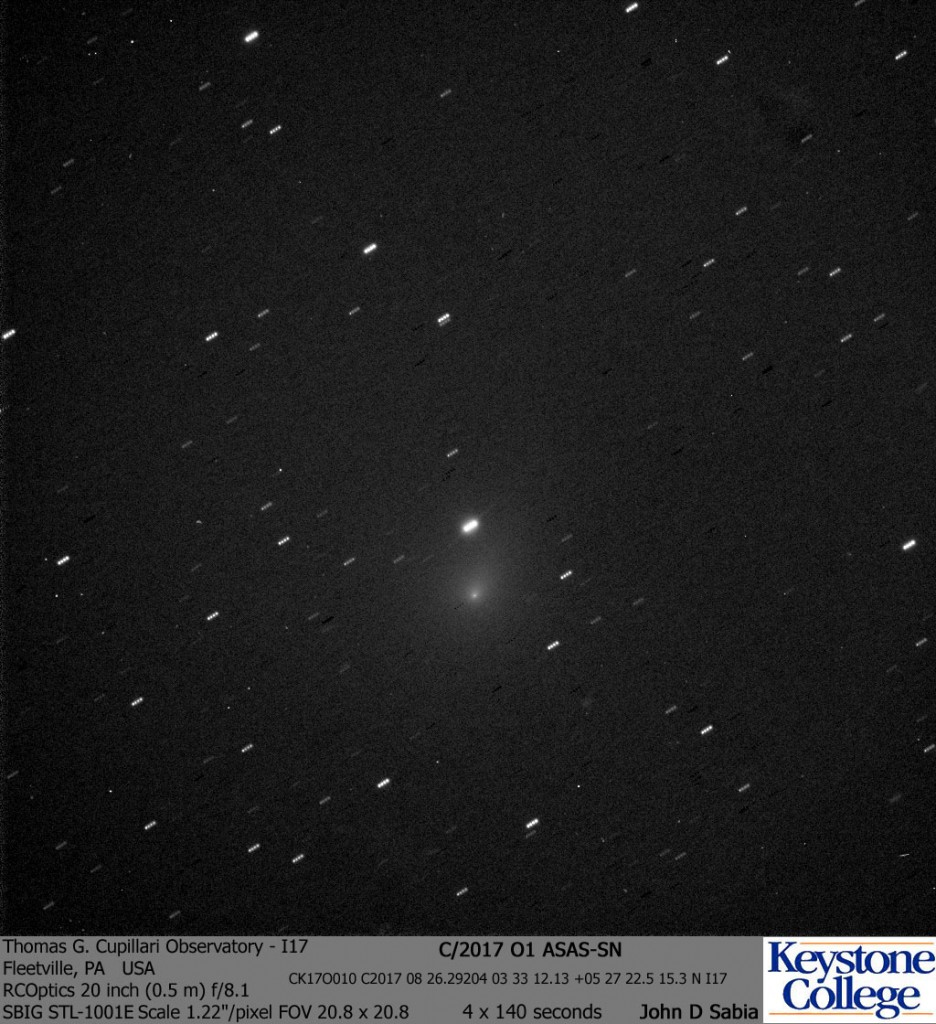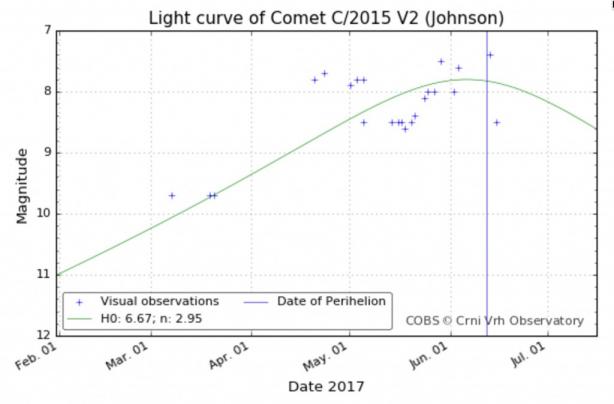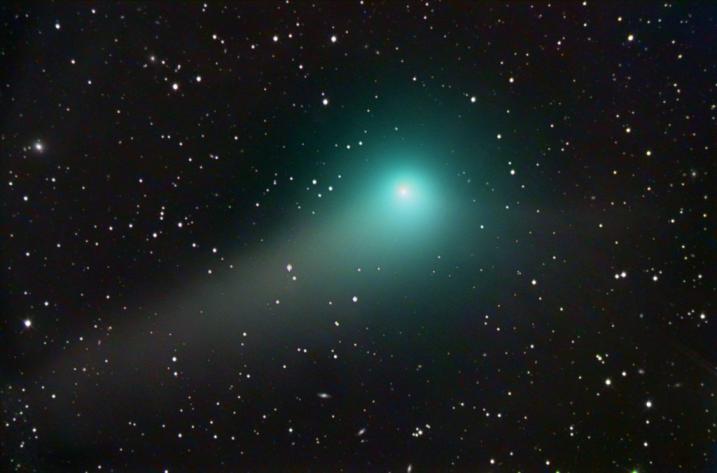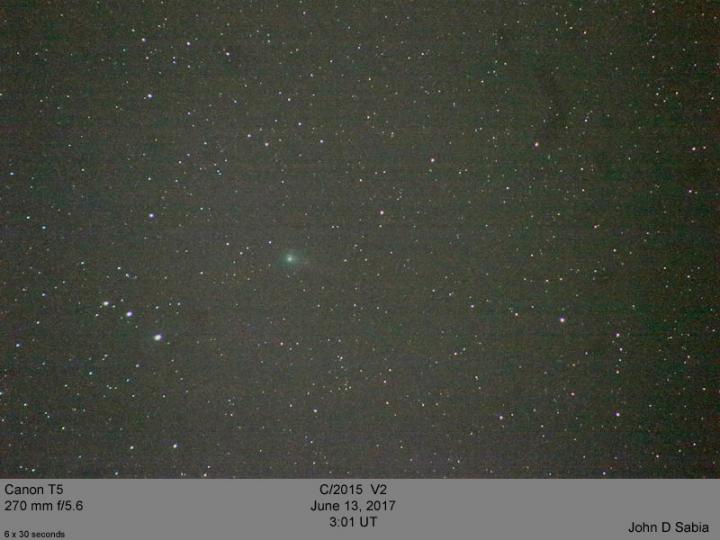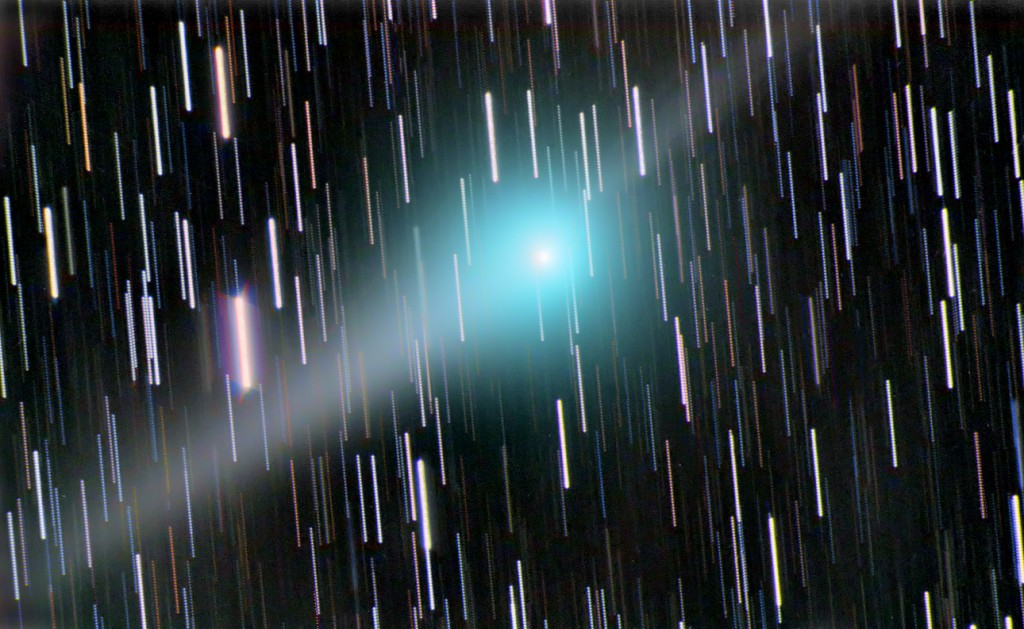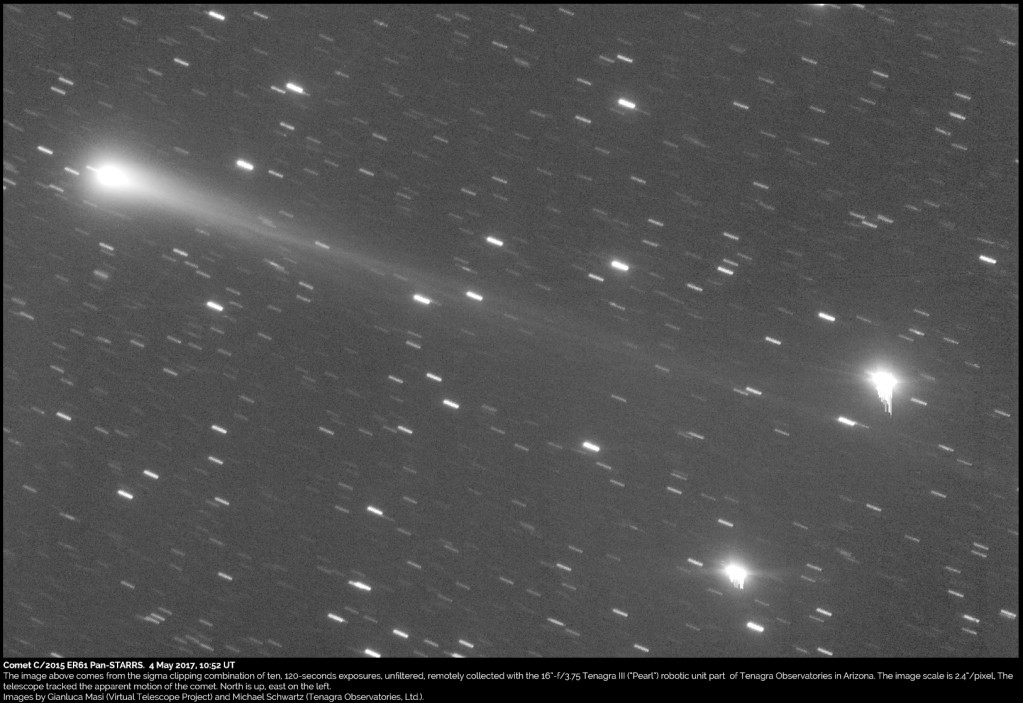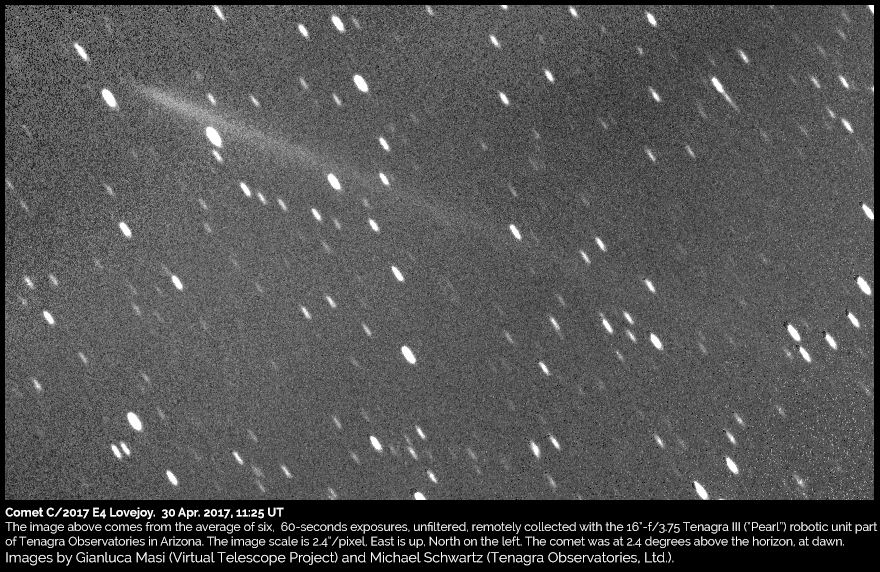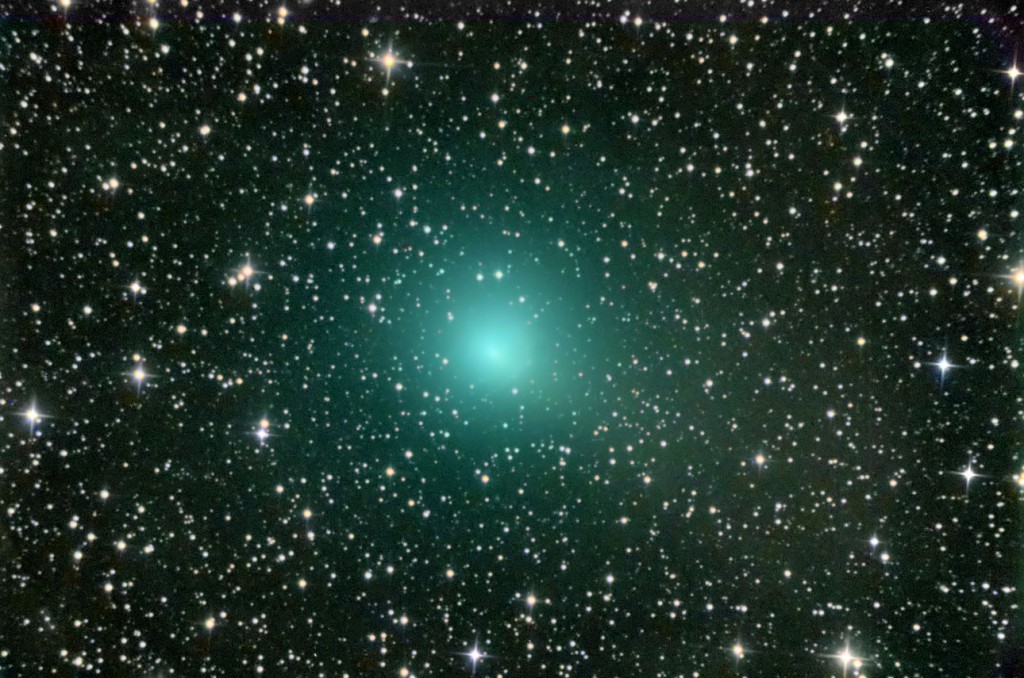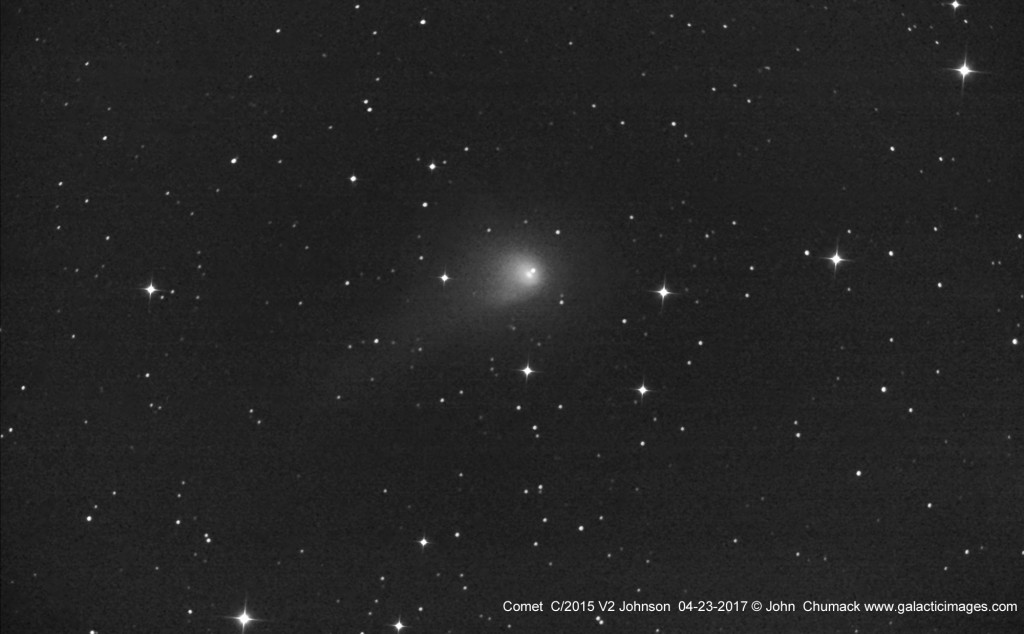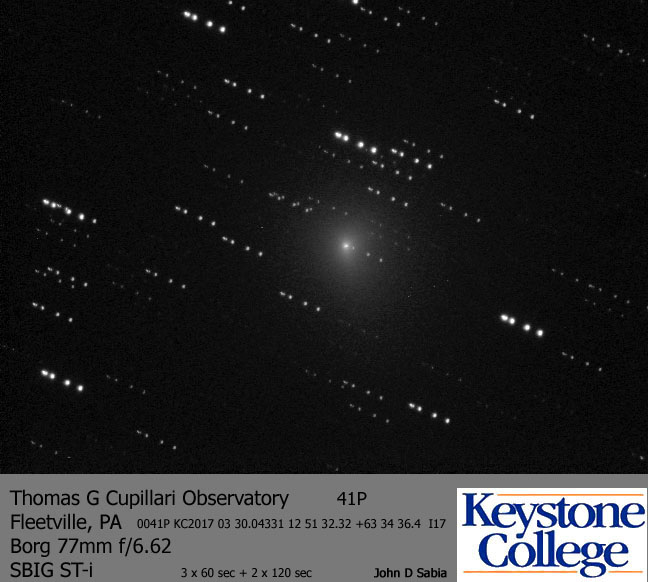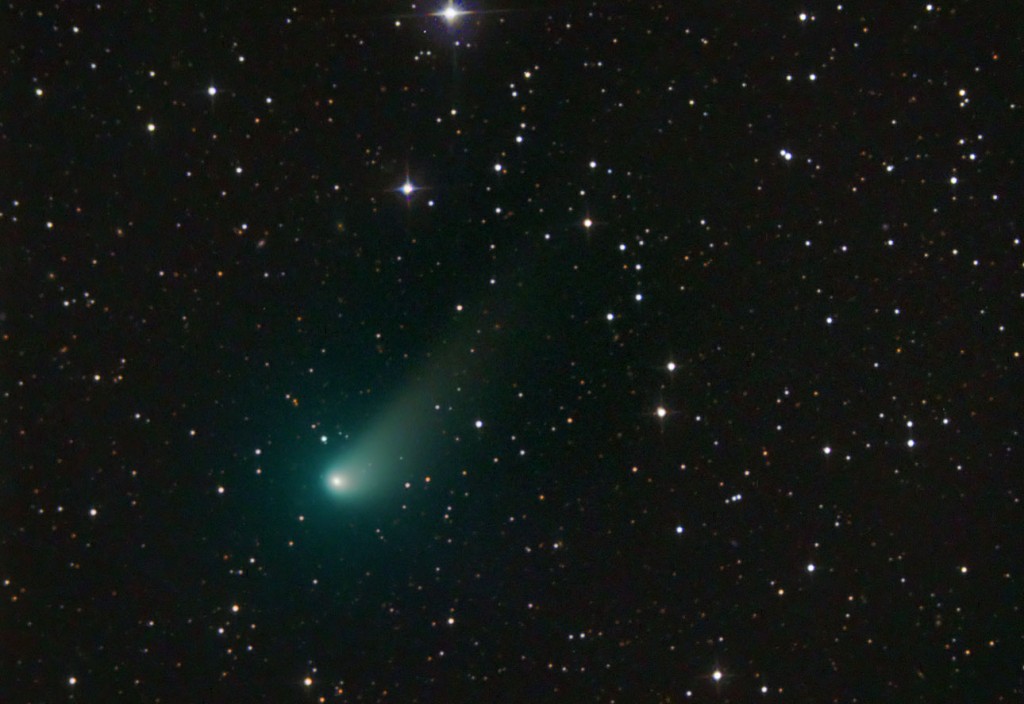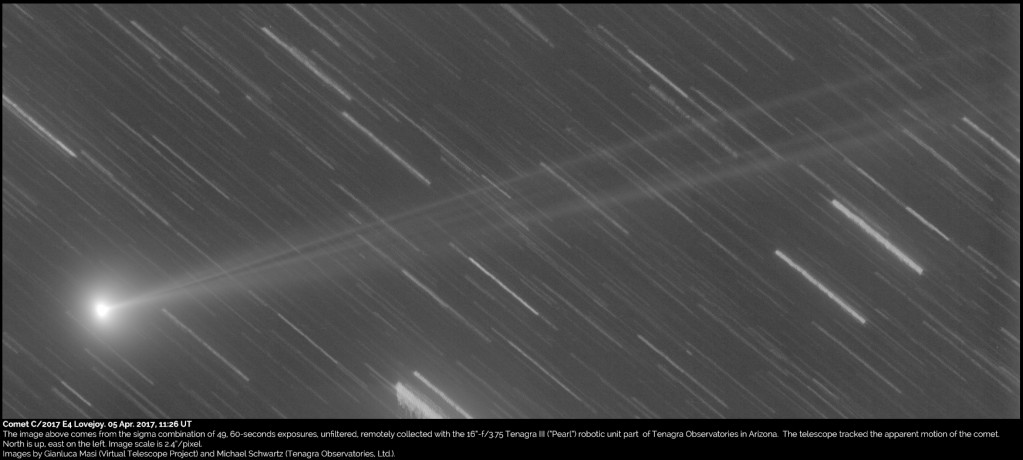ALPO COMET NEWS – JULY 2017
2017-July-4
The first half of 2017 saw 8 comets reach 10th magnitude or brighter. There were even times when 4 comets were observable in a night with small equipment. The second half of 2017 will see a slow down in activity. After the current crop of comets fade, it is possible that no additional comets will brighten to better than 10th magnitude till next summer.
Evening observers can continue to monitor C/2015 V2 (Johnson) as it moves south through Virgo, Hydra and into Centaurus. Morning observers can watch C/2015 ER61 (PANSTARRS) slowly fade in Aries. For large aperture visual and CCD observers, comets 29P/Schwassmann-Wachmann 1, 71P/Clark and 217P/LINEAR are between 10th and 13th magnitude.
This past June the Comet Section received comet magnitude estimates for comets 71P/Clark, C/2015 ER61 (PANSTARRS) and C/2015 V2 (Johnson) from Salvador Aguirre, Carl Hergenrother, John Sabia and Willian Souza. CCD images were received for comets 71P/Clark, C/2015 ER61 (PANSTARRS) and C/2015 V2 (Johnson) from Gianluca Masi, John D. Sabia, Chris Schur and Michael Schwartz.
Evening C0mets
C/2015 V2 (Johnson) [Perihelion on 2017 June 12 at 1.64 au]
The brightest comet this month should be Comet Johnson. Since March, it has been brighter than 10th magnitude with a peak between magnitude 7.5 and 8.0 in May/June. This month will probably be the last time most northern observers will be able to observe Johnson as it moves rapidly south through Virgo (July 1-16), Hydra (16-28), Centaurus (28-31). By the end of the month, it will be at a southern declination of -32 deg. As mentioned in the past few posts, Johnson appears brighter in small binoculars compared to larger telescopes. While its true brightness is currently between magnitude 8.0 and 8.5, binocular observers are seeing it up to 0.5-1.0 magnitudes brighter due to contamination from its large high surface dust tail. Regardless of what instrument you use, Johnson should fade by up to a magnitude during the month as its moves away from the Sun (1.66 to 1.77 au) and Earth (0.95 to 1.35 au). The image below was taken by Chris Schur on June 15 with a 10″ f/3.9 Orion astrograph and SBIG ST-10XME.
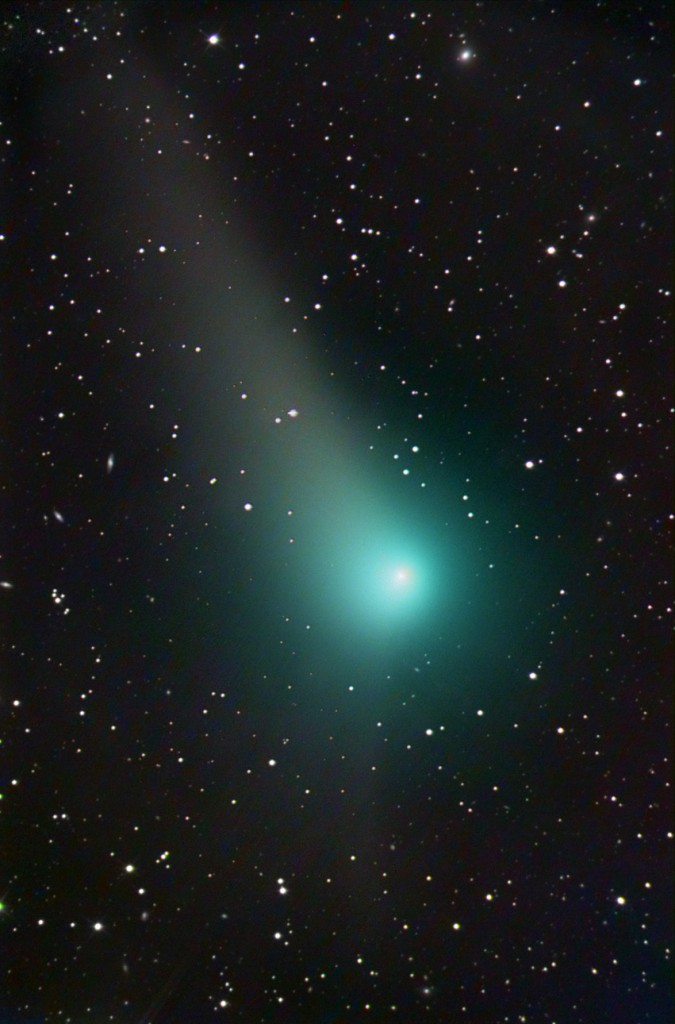
71P/Clark [Perihelion on 2017 June 30 at 1.59 au]
Discovered back in 1973, periodic comet 71P/Clark is making its 8th observed return. Similar to last month, it will spend all month in Scorpius as it moves south from -33 to -37 deg declination. Recent reports place the comet between magnitude 9.7 and 10.2. This apparition marks Clark’s best as it comes as close to the Earth as it can on its current orbit. Perihelion and closest approach to Earth occurred last month so it will be slowly moving away from the Sun (1.59 to 1.62 au) and Earth (0.63 to 0.79 au) resulting in fading from magnitude 10 to 11.
41P/Tuttle-Giacobini-Kresak [Perihelion on 2017 Apr 12 at 1.05 au]
It is now 3 months since 41P/T-G-K’s close approach to Earth in April. The comet is rapidly fading and starts the month around magnitude 11 and may fade to 15 by the end of the month. This month 41P will move through Serpens Cauda as it moves away from the Sun (1.47 to 1.73 au) and Earth (0.47 to 0.81 au).
The 4*P Coma Morphology Campaign is interested in images of comets 41P as well as 45P/H-M-P from earlier this year and images of next year’s 46P. The Campaign will use images of these comets to derive their rotational state, characterize their nucleus’ activity, characterize outbursts, and learn more about gas and dust properties in the coma (e.g., outflow velocities), chemical origin of gas species in the coma, and temporal behavior of the tail structure. This is an excellent opportunity to contribute to an amateur-professional corroboration. Though 41P is getting rather faint, the campaign is still interested in observations for as long as possible. If you would like me to facilitate your submission of images or contact with the 4*P Campaign, just let me know.
Morning Comets
29P/Schwassmann-Wachmann 1 [Perihelion on 2019 March 7 at 5.77 au]
As the number of bright comets dwindles, we are digging a little fainter for targets such as the enigmatic comet 29P/Schwassmann-Wachmann 1. This comet is always active even though it never gets much closer to the Sun than Jupiter. With an eccentricity of 0.04, it also doesn’t get too much further from the Sun than Jupiter. Currently, the comet can be classified as a Centaur with a 14.8 year period. S-W 1 also regularly experiences outbursts from its usual brightness of 16-18th magnitude to peaks near 12-13th magnitude. Recent research suggests that 29P has a slow rotation period on the order of days. Work by prolific BAA Comet Section contributor Richard Miles places the rotation period at 57 days. Further monitoring of 29P’s outbursts will help better constrain its rotation period and outburst mechanisms. This is one comet where rapid changes in brightness and coma morphology make day-to-day monitoring worthwhile. This year 29P will be near the border of Capricornus and Aquarius near declinations of -13 to -14 deg.
C/2015 ER61 (PANSTARRS) [Perihelion on 2017 May 9 at 1.04 au]
C/2015 ER61 (PANSTARRS) reached perihelion back on May 9 at 1.04 au from the Sun and is moving away from the Sun (1.35 to 1.69 au) and Earth (1.56 to 1.67 au). Back in April, it experienced a 2 magnitude outburst. This outburst may have been due to a splitting event as recent CCD images have detected a secondary. Due to its increasing distance to the Sun and Earth it will slowly fade from around magnitude 10.0 to 10.5. All month, ER61 is a morning object moving through Aries.
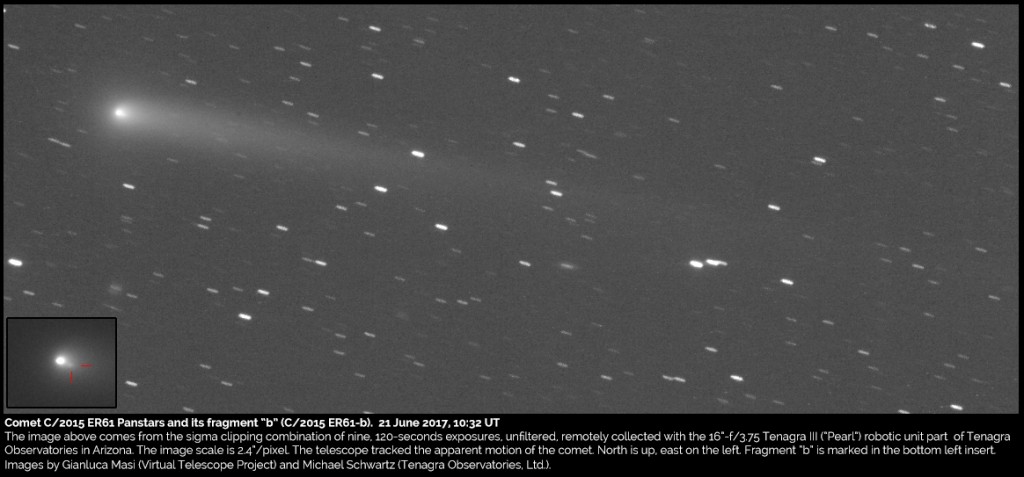
217P/LINEAR [Perihelion on 2017 Jul 16 at 1.24 au]
217P had a nice apparition last time around in 2009 when it brightened to 9th magnitude. This year’s apparition won’t be as good with it only brightening to 12-13th magnitude. Southern CCD observers will be able to watch it as it moves through Cetus (Jul 1-10) and Taurus (10-3). Northern observers will also be able to see it though it will be at a low elevation, though it slowly climbs higher as the month progresses. The comet spends the entire month 1.24-1.25 au from the Sun and 1.43-1.44 au from Earth. CCD observations are especially requested as 217P displayed some interesting jet features in 2009.
Other Comets in the News
Last month, I discussed newly discovered C/2017 K2 (PANSTARRS). There were some questions about it in that it appeared to be a very bright Halley-type comet headed for a close perihelion in 2023. The big question was how could such a large bright object not have been seen at its last perihelion. A new orbit published by the MPC clears up some of the mystery. K2 now appears to be a long-period comet rather than a Halley-type with Perihelion occurring in December 2022 at 1.80 au.
It is too early to know how bright this comet will get. Just extrapolating its current brightness suggests it will peak near 6th magnitude. There are a few things going against K2 becoming a bright object. One, it will only come within 1.8 au of Earth and will be 2.4 au from Earth at perihelion. Two, the latest orbit makes K2 a dynamically new comet. This can help explain its high intrinsic brightness at 16 au. It also throws up a huge red flag since dynamically new comets are prone to underperforming near perihelion. Regardless, it is unprecedented to be able to monitor a long-period comet for so long as it approaches a small perihelion distance. CCD observers are asked to place K2 on there regular program and to image this comet monthly.
As always, the Comet Section is happy to receive all comet observations, whether images, drawings or magnitude estimates.
- Carl Hergenrother (ALPO Comet Section Coordinator)

